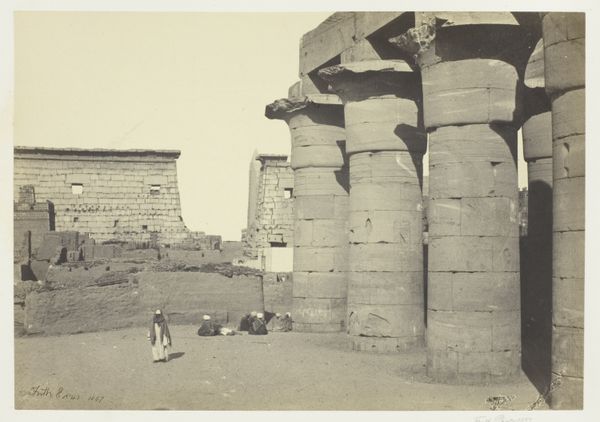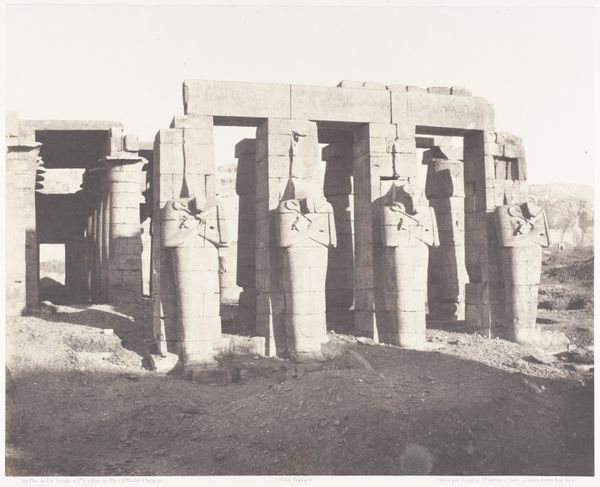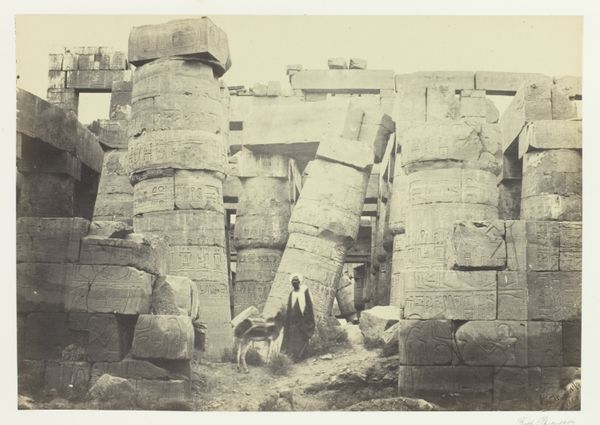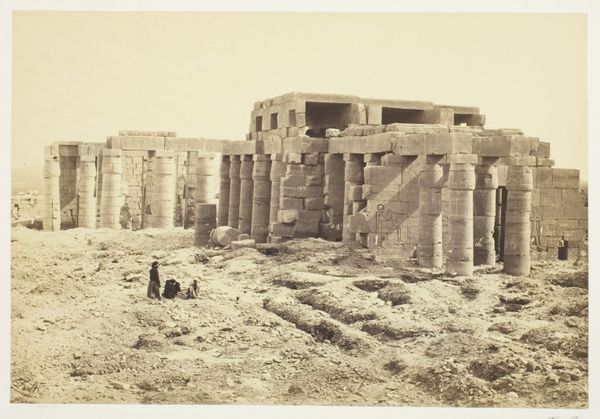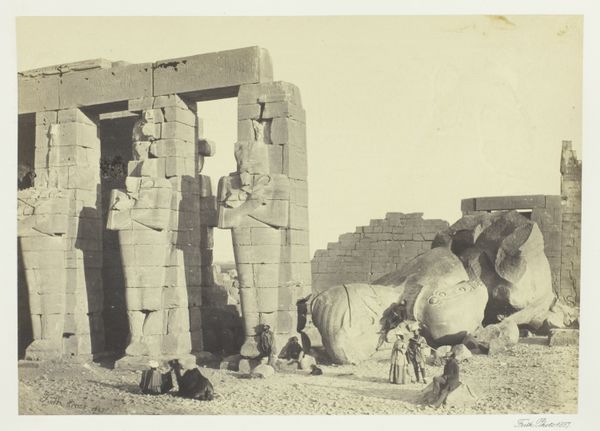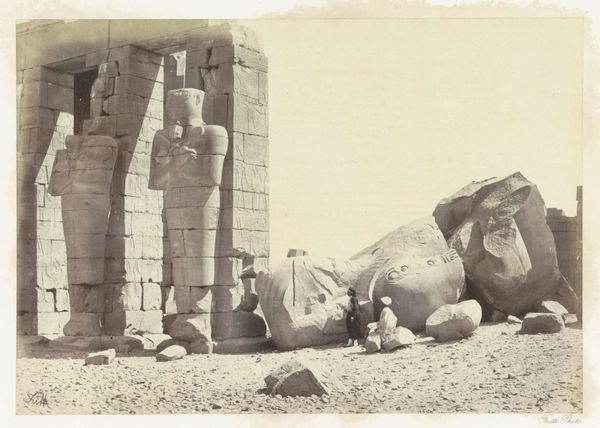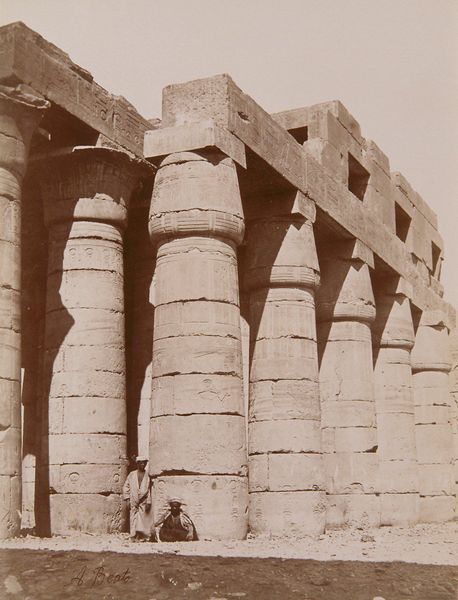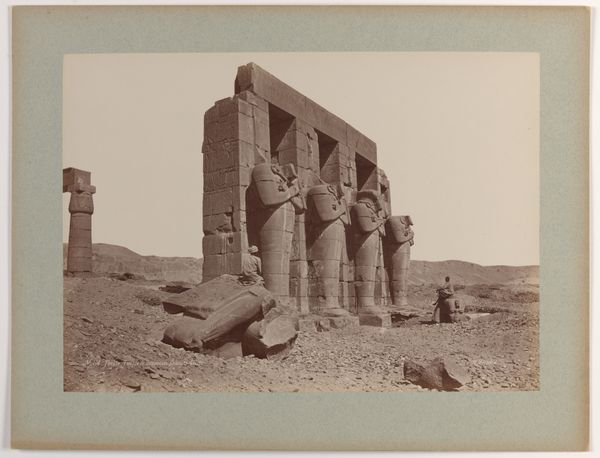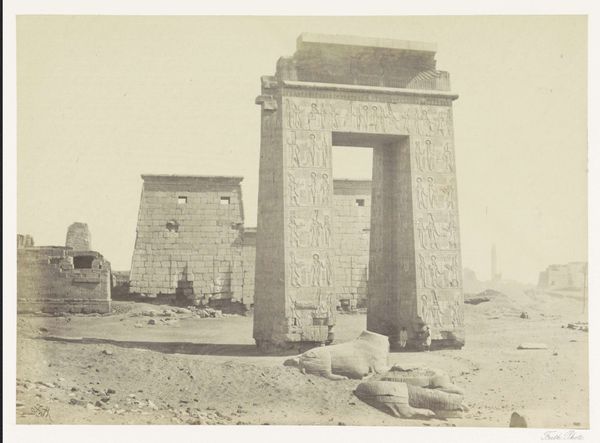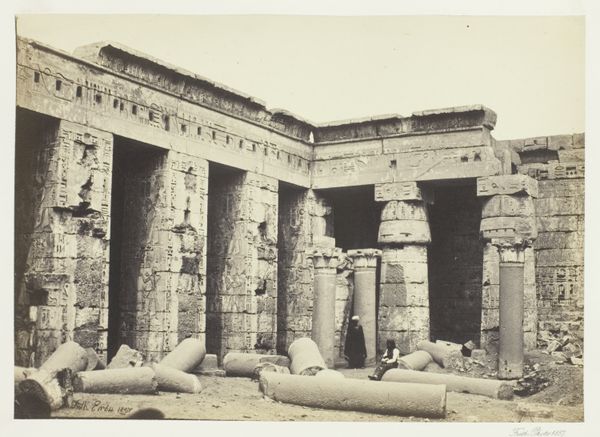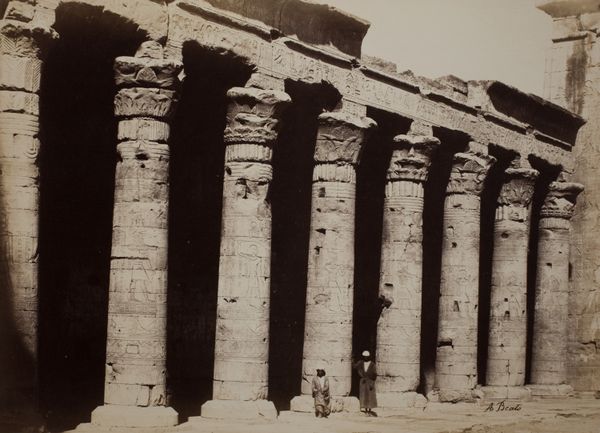
photography, albumen-print, architecture
#
landscape
#
ancient-egyptian-art
#
photography
#
ancient-mediterranean
#
albumen-print
#
architecture
#
realism
Dimensions: height 150 mm, width 215 mm
Copyright: Rijks Museum: Open Domain
Editor: So this is Francis Frith's "Gezicht op de Luxortempel," taken before 1862. It's an albumen print, showing the Luxor Temple. I'm immediately struck by the contrast between the massive, weathered stones of the temple and the small figures in the foreground. What historical narratives do you think this image invites us to consider? Curator: It's crucial to understand Frith's presence in Egypt within the context of British colonialism. While seemingly documenting the "exotic" and the "ancient," this photograph subtly reinforces a power dynamic. Whose gaze is privileged here? Is it the Western viewer observing a distant land and its inhabitants? Consider the subjects themselves—how might they be affected and impacted by the very act of being documented by someone like Frith? Editor: That's a powerful point. It’s easy to get lost in the architectural details and forget the social implications. Are you suggesting Frith's photograph isn't just a neutral depiction but a political statement? Curator: Exactly! It is essential to interrogate what seems to be 'real'. Photography, especially in this era, wasn't objective. Frith’s composition, his choices about what to include and exclude, all contribute to a specific narrative. How does the contrast between the colossal temple and the figures in the foreground reinforce colonial ideas about civilization and the “other”? How is this different from an Egyptian artist's perspective of this temple and those people? Editor: It completely reframes my understanding. The vastness of the temple, coupled with the seeming insignificance of the people, really does play into that narrative of Western dominance. I had not really appreciated the photographer’s position as an observer with agency. Curator: And consider, too, the economic aspects. Frith profited from selling these images to a European audience hungry for visual representations of the "Orient." This raises questions about cultural appropriation and the commodification of ancient heritage. Thinking about Frith's intentions forces us to confront uncomfortable questions about how history is constructed and whose voices are amplified, doesn't it? Editor: Definitely. I'll never look at another historical photograph the same way. Thanks, that was really helpful to unpack its many layers.
Comments
No comments
Be the first to comment and join the conversation on the ultimate creative platform.
